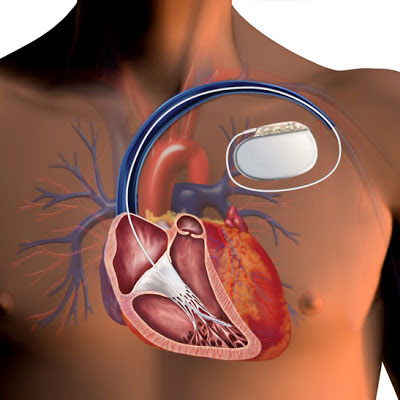Intracardiac Defibrillation in Vijayawada

An ICD is a small device which can treat people with dangerously abnormal heart rhythms.
It sends electrical pulses to regulate abnormal heart rhythms, specifically those that can be dangerous and cause a cardiac arrest.
The heart has an electrical system that regulates the heartbeat. With every heartbeat, there is an electrical signal that follows through your heart, causing it to contract and pump blood. When this process doesn’t happen properly, you could have an abnormal heart rhythm (or arrhythmia) and may need an ICD fitted.
How does an ICD work?
An ICD is placed under the skin to monitor your heart rate, with thin wires connecting it to the heart. An ICD constantly monitors your heart rhythm through the electrodes.
If an ICD notices a dangerous heart rhythm it can deliver one or more of the following treatments:
- Pacing – A series of low-voltage electrical impulses (paced beats) at a fast rate to try and correct the heart rhythm.
- Cardioversion – One or more small electric shocks to try and restore the heart to a normal rhythm.
- Defibrillation – One or more larger electric shocks to try and restore the heart to a normal rhythm.
ICDs are inserted under local anaesthetic, but with sedation, so you will feel very sleepy. It can take anything from one hour to three or more hours to implant an ICD, and the time it takes will depend on the type of device you're having. You will often (but not always) need to stay overnight in hospital and your ICD will be checked thoroughly before you leave.
The ICD is inserted just under your collar bone. It looks similar to a pacemaker and is a little bigger than a matchbox.
An ICD is made up of:
- A pulse generator – a battery powered electronic circuit.
- One or more electrode leads, which are placed into your heart through a vein.
A different type of ICD is suitable for some people. It's called a subcutaneous (under the skin) ICD – or SICD for short. An SICD works in the same way as an ICD, but it's inserted under the skin of the chest (outside of the ribcage) and there are no leads placed into the heart. Your doctor will talk to you about this option if it’s right for you.





